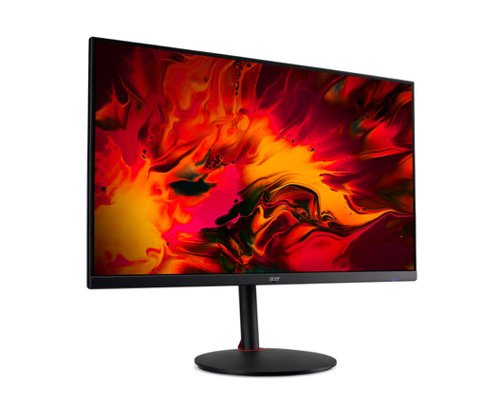
Monitor Buying Guide - What You Need to Know! [2024]
Choosing the right PC monitor can significantly enhance your computing experience, whether you're gaming, working, or simply browsing the web. With so many options available in 2024, it's essential to understand what features and specifications matter most. Your PC monitor should be a long-term investment, lasting you at least five years, so it’s important to make the right decision. This guide will walk you through everything you need to know to make an informed decision.
Understanding Monitor Types
LCD vs. LED
The two primary types of monitors you'll encounter are LCD (Liquid Crystal Display) and LED (Light Emitting Diode). While both use liquid crystals to display images, LED monitors utilise LEDs for backlighting, offering better energy efficiency and often superior picture quality.
Recently, LED monitors have themselves evolved, with different brands having their own, improved versions of this technology, for example OLED (Organic Light Emitting Diode).
IPS vs. TN vs. VA Panels
- IPS (In-Plane Switching): Known for excellent colour accuracy and wide viewing angles, making them ideal for graphic designers and photographers.
- TN (Twisted Nematic): Typically cheaper and offer faster response times, making them popular among gamers.
- VA (Vertical Alignment): Provide better contrast ratios than IPS and TN panels but may suffer from slower response times.
Key Specifications to Consider
Resolution
Resolution refers to the number of pixels on the screen. Higher resolutions provide sharper images but require more powerful hardware. A general rule of thumb is the larger the monitor, the better the resolution needs to be. So, consider a better resolution for any screens larger than 27”.
- 1080p (Full HD): Suitable for general use and budget gaming.
- 1440p (Quad HD): Offers a good balance between performance and visual quality.
- 2160p (4K Ultra HD): Ideal for high-end gaming and professional work that demands detailed visuals.
Refresh Rate
Measured in Hertz (Hz), the refresh rate indicates how many times per second the screen updates its image. Higher refresh rates result in smoother motion.
- 60Hz: Standard for most monitors.
- 120Hz - 144Hz: Better for gaming as it offers smoother gameplay.
- 240Hz: For competitive gamers who need every possible advantage.
Response Time
Response time measures how quickly a pixel can change from one colour to another. Lower response times reduce motion blur in fast-paced scenes.
- 1ms - 2ms: Ideal for gaming.
- 5ms - 8ms: Suitable for general use and casual gaming.
Connectivity Options
Modern PC monitors come with various ports that you should consider based on your needs:
- HDMI: Commonly used for both video and audio signals.
- DisplayPort: Offers higher bandwidth than HDMI, making it ideal for high-resolution displays.
- USB-C/Thunderbolt 3: Provides power delivery along with video output, useful for connecting laptops or mobile devices.
- VGA/DVI: Older standards that are becoming less common but still found on some budget models.
Size
Bigger is usually better when it comes to the right choice of monitor. However, you should only consider a larger screen if you have the room available on your desk. Also, bigger usually means more expensive, too, as a bigger monitor will need higher resolution to ensure that the viewing experience is relaxing. A 27” monitor is a good entry point – a screen that is not too big to dominate a room, yet large enough to provide plenty of real estate for multiple applications.
Additional Features
Adaptive Sync Technology
Adaptive Sync technologies like NVIDIA's G-Sync or AMD's FreeSync synchronise the monitor's refresh rate with your graphics card's frame rate, reducing screen tearing and stuttering during gameplay.
HDR Support
High Dynamic Range (HDR) enhances colour range and contrast ratios, providing more vibrant images. Look for HDR10 or Dolby Vision support if this feature is important to you.
Ergonomics & Design
Consider a monitor with adjustable stands that allow you to tilt, swivel, pivot, or adjust height. VESA mount compatibility is also useful if you plan to mount your monitor on a wall or arm stand.
Budget Considerations
Monitors come in various price ranges:
- Budget (£100 - £200): Basic features suitable for everyday tasks like browsing or office work.
- Mid-range (£200 - £500): Better resolution, higher refresh rates, suitable for gaming and professional work.
- High-end (£500+): Top-of-the-line features including 4K resolution, high refresh rates, HDR support etc., ideal for enthusiasts and professionals.
Popular Brands & Models in 2024
Several brands have established themselves as leaders in the PC monitor market:
- Phillips V-Line
- ASUS ROG Swift
- LG UltraGear
- Samsung Odyssey
- Acer Predator
Each of these brands offers models catering to different needs—from budget-friendly options to high-end displays designed specifically for gamers or professionals.
Conclusion
Selecting the right PC monitor involves balancing various factors such as resolution, refresh rate, panel type, connectivity options, additional features like adaptive sync technology or HDR support—and of course—your budget constraints. By understanding these key aspects outlined in this guide, you'll be well-equipped to make an informed decision when purchasing your next PC monitor in 2024.
You may also find our other monitor guides useful:
Direct Imaging Supplies – your expert PC Monitor partner
At Direct Imaging, we pride ourselves on the expertise that we have built up over many years of supplying IT equipment. Our team are knowledgeable and professional, and can be trusted to give you the best possible advice for your budget when it comes to choosing a PC Monitor.
.svg)